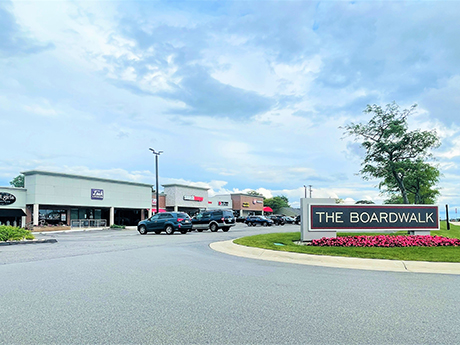By Ashish Vakhariya, Marcus & Millichap
Detroit’s retail market continues to show pockets of strength amid broader economic and retail sector headwinds. More affluent northern suburbs and the revitalizing urban core have demonstrated greater resilience, while limited construction activity should support the backfilling of existing space. Detroit’s position among the highest-yielding metros in the country will likely remain a key draw for investors, with capital focusing on well-located, necessity-based and service-oriented retail assets.
Big-box downsizing and rising cost pressures create a cautious leasing environment: Detroit’s retail landscape recorded more than 1 million square feet of negative net absorption over the nine months that ended in March, with preliminary second-quarter figures indicating continued space relinquishment. Strained consumer demand and structurally challenged retail formats have contributed to a wave of bankruptcies and consolidations among major tenants, including Party City, Big Lots, Macy’s and Walgreens.

Trade policy uncertainty has further heightened tenant caution, as elevated input costs are expected to weigh on leasing activity. A recent Michigan Retailers Association survey found that more than 60 percent of businesses statewide rely on imported goods.
With consumers more price-sensitive, many retailers may struggle to pass on higher costs; however, tenants reliant on locally sourced inventory — such as thrift shops and vintage retailers — should face fewer supply chain disruptions. Value-focused and essential goods providers are also poised to support leasing activity, with chains like Amazon Fresh, Meijer, Aldi and Dollar Tree planning to expand in 2025.
Minimal deliveries push tenants toward existing inventory: A shrinking development pipeline is expected to help contain upward pressure on vacancy and support the backfilling of recently vacated buildings. Roughly 250,000 square feet of retail space is forecast to deliver in 2025 — the smallest annual total in over two decades. Moreover, 75 percent of the space was already leased as of June and is largely concentrated in small-format, single-tenant properties across northern suburbs in Oakland, Livingston and Macomb counties. With few new space options coming online this year, leasing activity will concentrate on existing supply.
Higher-income suburbs hold steady as move-outs rise in outlying areas: Tenant move-outs in 2025 have largely been in lower-income and peripheral areas with weaker purchasing power, with western Wayne County, Flint and St. Clair County accounting for the bulk of relinquished space. In contrast, more centrally located and affluent submarkets are showing signs of stabilization. The Interstate 96 corridor in Livingston and Oakland counties continues to outperform, maintaining the lowest vacancy in the metro at around 4 percent as of March.
Nearby middle- to upper-income suburbs, such as Bloomfield and Southfield, have also experienced steadier demand in 2025, following a sharp rise in vacancy last year due to several large move-outs. Increased availability in these areas has attracted tenants seeking larger floorplans, with experiential concepts like a pickleball club and adventure park among the largest move-ins this year.
Corporate investments and cultural amenities fuel urban leasing resilience: Detroit’s urban core and surrounding infill neighborhoods have seen steady leasing activity and minimal tenant move-outs so far in 2025, supported by ongoing revitalization efforts and a growing residential base. In 2024, the Midtown-Downtown submarket recorded its strongest multifamily demand in nearly a decade, driven by expanding employment opportunities and urban amenities.
Ford’s Michigan Central Innovation District officially opened in mid-2024, following a six-year, $740 million restoration, introducing mixed-use office and retail space. In April 2025, construction began on a 70,000-square-foot, 1,500-seat immersive event venue downtown, further enhancing the area’s cultural offerings. These developments are reinforcing Detroit’s position as a live-work destination and are set to sustain retail leasing and investor interest across the urban core.
High yields and minimal new supply reinforce investor interest: Investment activity in 2025 has moderated amid renewed economic uncertainty; however, the metro’s average cap rate of 7.7 percent over the year ending in March — the second highest among major U.S. markets — still attracts out-of-state investors. Large buyers have favored shopping centers anchored by tenants with relatively inelastic demand profiles, including grocery stores, fitness centers and discount retailers.
Infill submarkets like Dearborn and Westland have been key targets, where limited available land should constrain new supply competition. Private buyers have similarly targeted these areas for stable triple-net assets leased to tenants such as banks, supermarkets and gas stations. Fast food and restaurant trades have been more common in higher-income suburbs like Novi and Troy, where stronger consumer spending upholds discretionary retail.
Limited multi-tenant availability attracts private capital: Strip centers have seen an uptick in investment activity as buyers seek higher yields amid elevated interest rates. Steady leasing demand for small-format space and a diversified tenant mix continues to support performance in this segment, with vacancy rates staying below those of neighborhood and community centers.
Limited construction of these property types should help sustain investor interest, particularly as the metro’s overall multi-tenant vacancy rate stood at just 1.6 percent in March — the second lowest among major U.S. markets. This tight supply backdrop is expected to maintain stable occupancy at strip centers, which remain favored by service-oriented and daily-needs tenants prioritizing highly accessible, convenience-driven locations.
Ashish Vakhariya is a senior vice president of investments with Marcus & Millichap. This article originally appeared in the July 2025 issue of Heartland Real Estate Business magazine.


